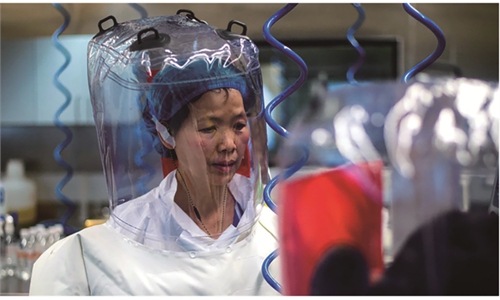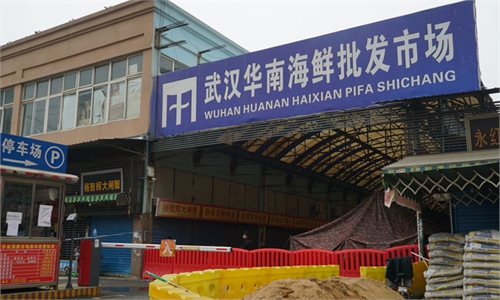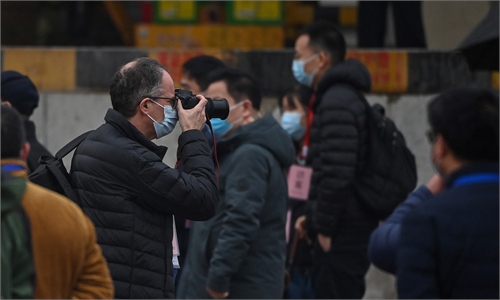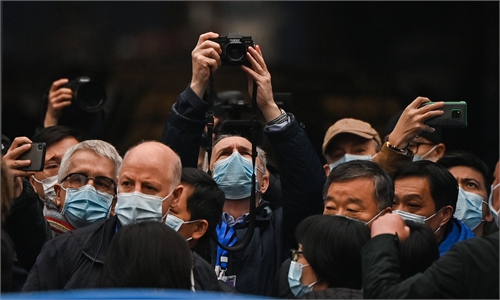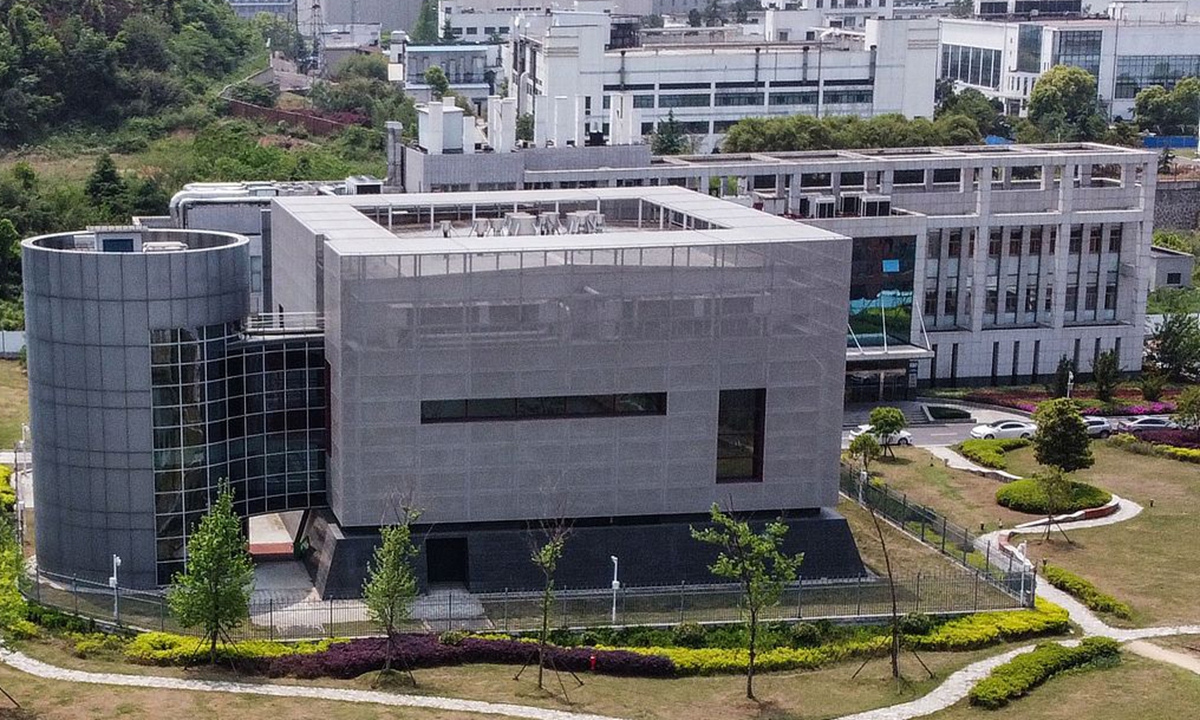
Wuhan Institute of Virology file photo:VCG
The WHO expert team visited the P4 lab inside the Wuhan Institute of Virology (WIV) on Wednesday, a place that became target of a storm of Western public opinion following a massive smear campaign led by some US politicians. The visit came after days of intensive field work looking for the origins of the novel coronavirus.The WIV has played a crucial role in global scientific cooperation. In addition to being fully transparent in its operations, it has also refuted conspiracy theories and unproven allegations about its links to COVID-19.
Peter Ben Embarek, the scientist leading the WHO team, confirmed with the Global Times that the experts visited the Wuhan Institute of Virology and the P4 lab in the institute on Wednesday.
He told the Global Times in an earlier interview that the team would meet Shi Zhengli, a leading virologist from the lab, who has been dubbed “Bat Woman” due to her years of research in bats and viruses and achievements in this field.
Founded in 1956, the WIV is home to China’s first high-level biosafety laboratory for studying class-four pathogens, which, like similar biosafety labs around the world, follows strict inspection and international standards. It was also one of the designated agencies of the National Health Commission to submit the genome sequence of the novel coronavirus to the WHO on January 12, 2020.
However, the place has been ruthlessly smeared by some anti-China politicians, such as former US Secretary of State Mike Pompeo, as part of their long-term strategy to incite a Cold War-like confrontation with China, with no respect being given to science and facts. Those allegations appeared “ridiculous” to those who work at the lab, and are not even worth refuting, sources close to the matter told the Global Times.
For instance, one unfounded allegation cited by US agencies was a report by the London-based NBC News Verification Unit last May which claimed there was no cellphone activity in a high-security section of the Wuhan Institute of Virology from October 7 through October 24, 2019, and that there may have been a "hazardous event" sometime between October 6 and October 11. Such reports were also part of a choreographed campaign supporting the “Wuhan lab virus leak theory” hyped by Western politicians.
A source close to the lab, who spoke on condition of anonymity, denounced such conspiracy theories, clarifying that the lab has never experienced such a so-called “hazardous event” and has never stopped operating since it was opened. “The US government had never provided one piece of verifiable evidence to support this hype about the coronavirus being leaked from the lab. Some politicians made such claims only to shift responsibility and divert public attention from their own failure in handling COVID-19,” he said.
“Without authorization, no unqualified person can enter the laboratory, and no scientific researcher can bring one piece of paper or a drop of water out of the laboratory,” the source said.
Scientific studies also suggest that the SARS-CoV-2 coronavirus most likely originated in bats, according to an article in scientific journal Nature last August.
Peter Daszak, the head of the New York-based EcoHealth Alliance and a member of the WHO team, has been working with Shi for over 15 years. He was also caught in the crosshairs following the politicization of the issue and hyping of conspiracy theories.
Over the past few years, Shi has been working on gene sequence analysis of the coronaviruses carried by bats. Perhaps because of this, there have been claims that a bat-carried virus strain she found in 2013 in a cave in Yunnan – RaTG13 – is believed to be the novel coronavirus SARS-CoV-2, which is also seen as “evidence” of the laboratory leak theory.
However, the novel coronavirus SARS-CoV-2 differs significantly from RaTG13, as the latter does not infect human cells, the source said.
Since the SARS outbreak in 2002, Shi’s team has conducted more than 10 years of research into the source of SARS and coronavirus from bats, understood the basic characteristics of coronavirus, established the corresponding detection techniques and stored related reagents and drugs.
Because of these experiences, the lab has completed source detection, sequence analysis and virus isolation within a week of obtaining samples after COVID-19 cases were reported in Wuhan.
It’s the work of Shi and other scientists that provided the conditions for our fight against the epidemic, especially for early diagnosis and drug screening, and laid the foundation for the study of rapid test reagents and vaccine development, the source told the Global Times.


